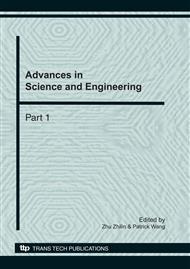[1]
Cheng Lin, Wang Wei, Yu Chunqing, et al. Modeling urban road network capacity [J]. Journal of Engineering Management, 2007, 6(3): 38-42.
Google Scholar
[2]
Hai yang, Michael G.H. Bell, Qiang Meng. Modeling the capacity and level of service of urban transportation networks [J]. Transportation Research Part B 34(2000): 255-275.
DOI: 10.1016/s0191-2615(99)00024-7
Google Scholar
[3]
Smeed R.L. Road capacity of city centers [J]. Traffic Engineering and Control, 1996, 8: 455-458.
Google Scholar
[4]
Louis, Ma Shang. Generalized concept —urban time-space occupancy [C]. Reference Material of Study on Urban transportation. Tianjin City Transportation Communications, 2008. Commission, 1986. 6.
Google Scholar
[5]
Sheffii Y., Urban Transportation Networks: Equilibrium Analysis with Mathematical Programming Methods[R]. Prentice-Hall, Englewood Cliffs, N J., (1985).
Google Scholar
[6]
Transportation Research Board. Highway capacity manual 2000[M] . Washington: National Research Council, (2001).
Google Scholar
[7]
Hai yang, Michael G.H. Bell, Qiang Meng. Modeling the capacity and level of service of urban transportation networks [J]. Transportation Research Part B 34(2000): 255-275.
DOI: 10.1016/s0191-2615(99)00024-7
Google Scholar
[8]
Ahuja, P.K., Magnanti, T.L., Orlin, J.B., Network Flows: Theory, Algorithms and Applications[R]. Prentice Hall, Englewood Cliffs, NJ. (1993).
Google Scholar
[9]
Akamatsu, T., Miyawwaki, O., Maximum network capacity problem under the transportation equilibrium assignment. Infrastrcture Planning Review, 1995, 12: 719-729.
DOI: 10.2208/journalip.12.719
Google Scholar
[10]
Asakura, Y. Maximum capacity of road network constrained by user equilibrium conditions[C]. Annual Conference of the UTSG, 1992, 24.
Google Scholar
[11]
Iida, Y. Methodology for maximum capacity of road network. Transaction of Japan Society of Civil Engineers, 1972, 205: 147-150.
DOI: 10.2208/jscej1969.1972.205_121
Google Scholar
[12]
Asakura Y., Kashiwadani M. Estimation model of maximum road network capacity with Parking constraints and its application. Infrastructure Planning Review, 1993, 11: 129-36.
DOI: 10.2208/journalip.11.129
Google Scholar
[13]
Smeed R.L. Road capacity of city centers [J]. Traffic Engineering and Control, 1996, 8: 455-458.
Google Scholar
[14]
Chen Chunmei, Ren Futian, Rong Jian. Review of Road Network Capacity [J]. Journal of Highway and Transportation Research and Development, 2002. 6(3): 23-25. *Chen hong, Doctor of Technical Science , Professor, PhD and Master Instructor. Research interests include theory and practice of transportation planning, traffic safety, traffic environment and so on.
Google Scholar


